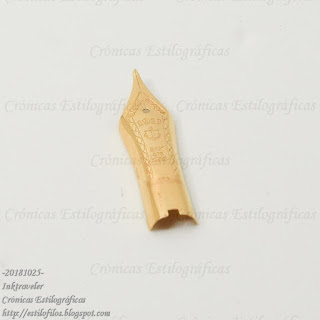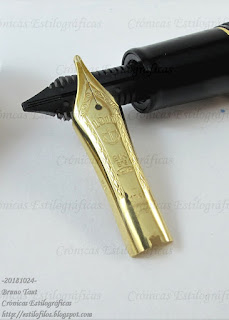It shows five different Capless models from three different generations: 1963, 1964, and 1965. The problem is that each of these generations of Capless used a different type of nib, and those types are not compatible. In other words, Pilot had to produce all three of them to satisfy the offer they had generated.

From left to right, models CS-100RW and C-100RW from 1965; C-200SW and C-300GW from 1964; and C-600MW from 1963.

These are the nib nits of the previous models--different year models use different nibs, and they are not exchangeable across model years.
The contrast with the current situation is startling: three different Capless models with just one type of nib unit that fits all of them!

From top to bottom, models Fermo, Décimo and (regular) Capless. All three of them use the same nib unit (although occasional incompatibilities have existed).
This example shows the crisis Pilot was experimenting during the 1960s. Another example of this inefficiency was the multiplicity of filling systems and cartridges Pilot manufactured at the time, as could be seen on a previous Chronicle.
The situation came to an end by 1969. A reorganization in the production and management, and the launching of some very successful model, resulted in a more powerful company.
Iwase Seisakusho prototype – Takeda Jimuki Hisoku
Bruno Taut
Chuo, January 22th, 2012
etiquetas: Capless, Pilot
Bruno Taut
Chuo, January 22th, 2012
etiquetas: Capless, Pilot




























































